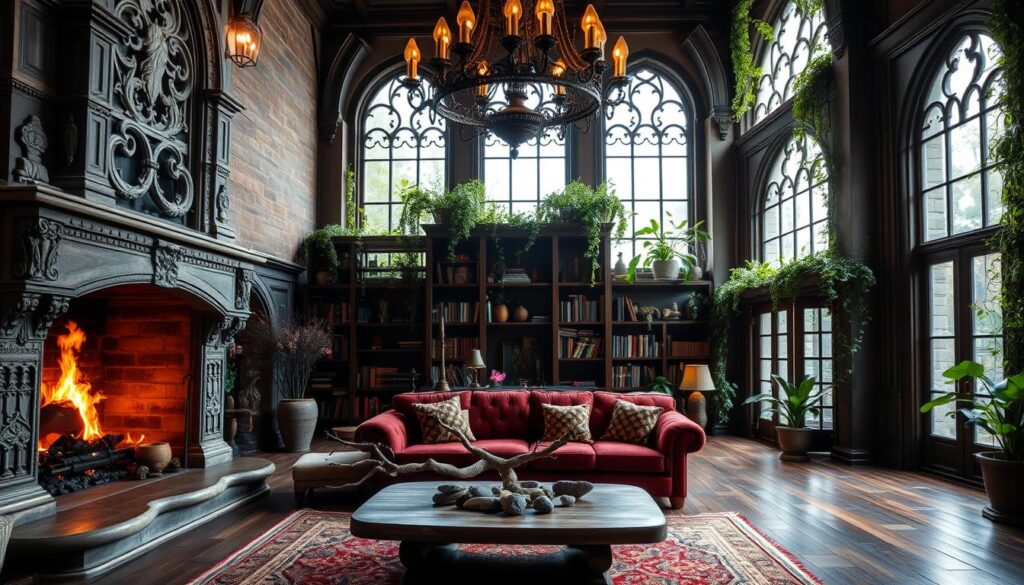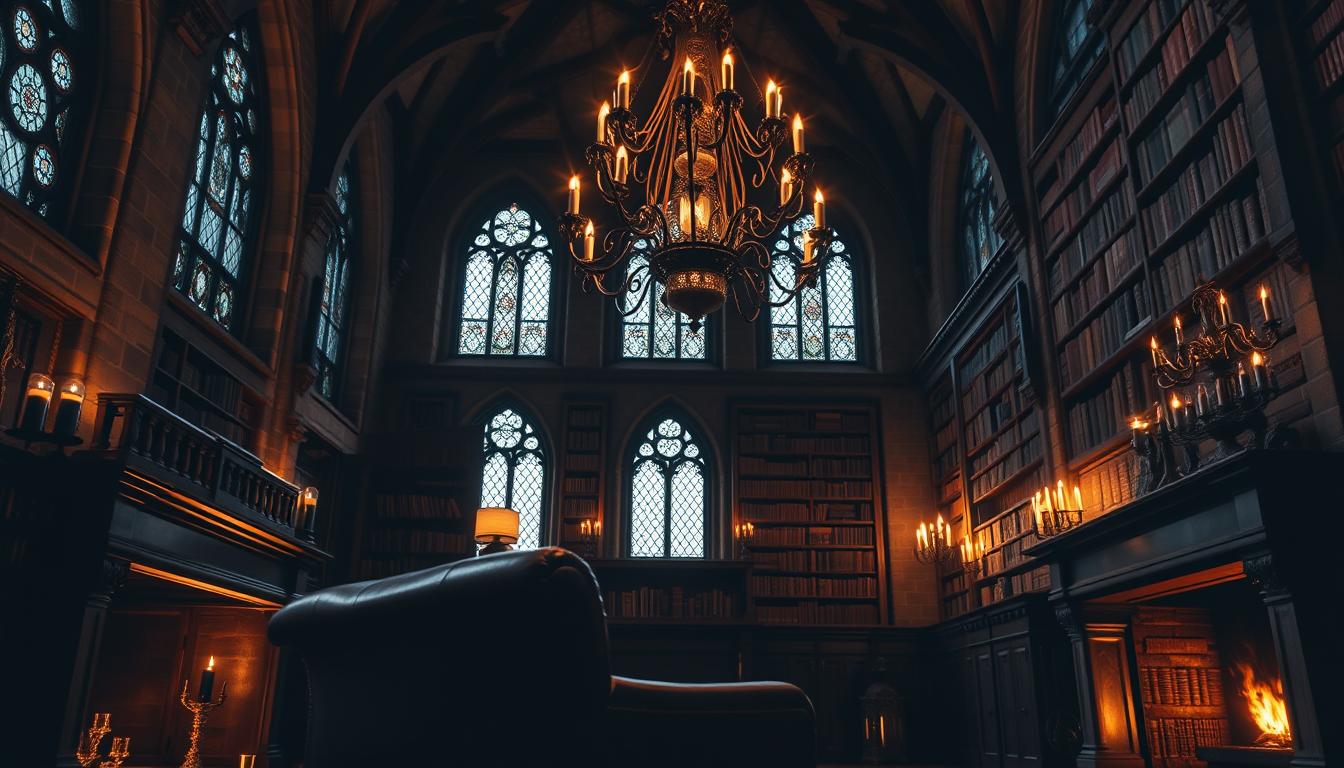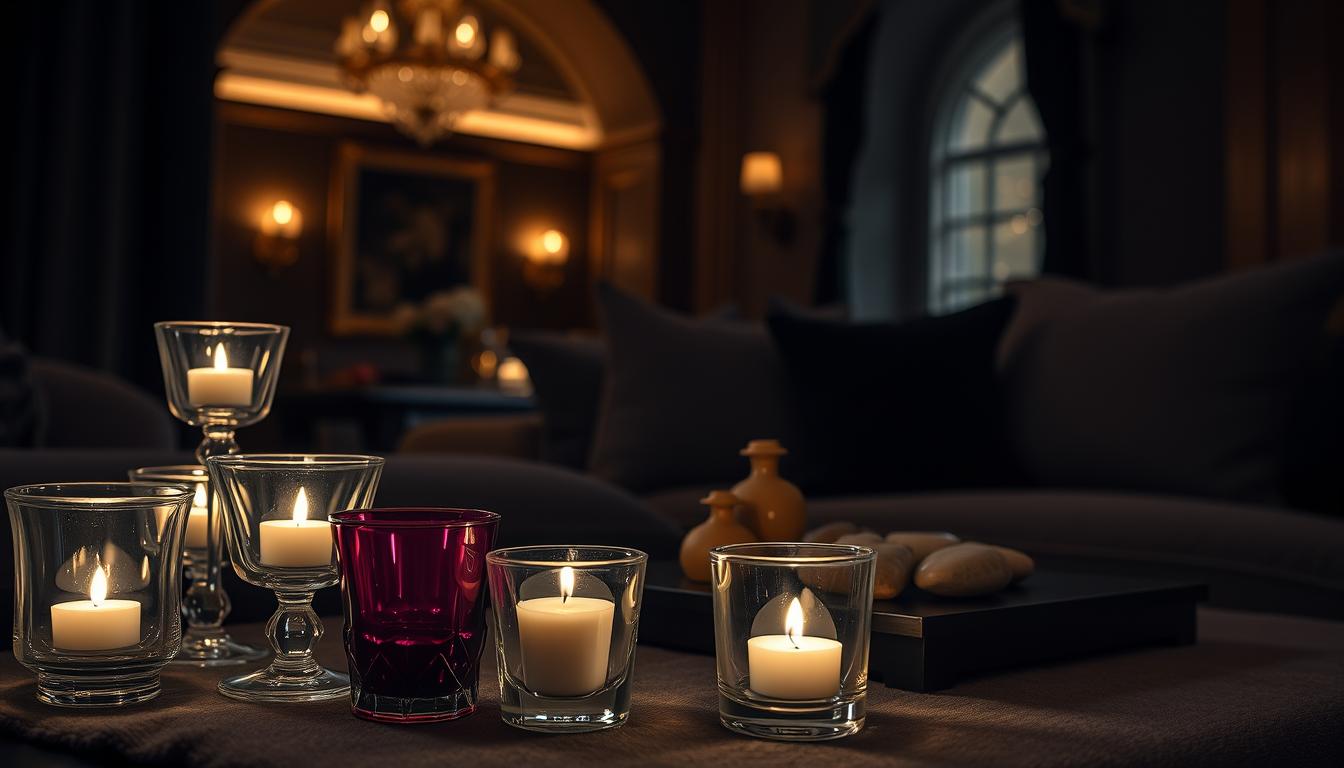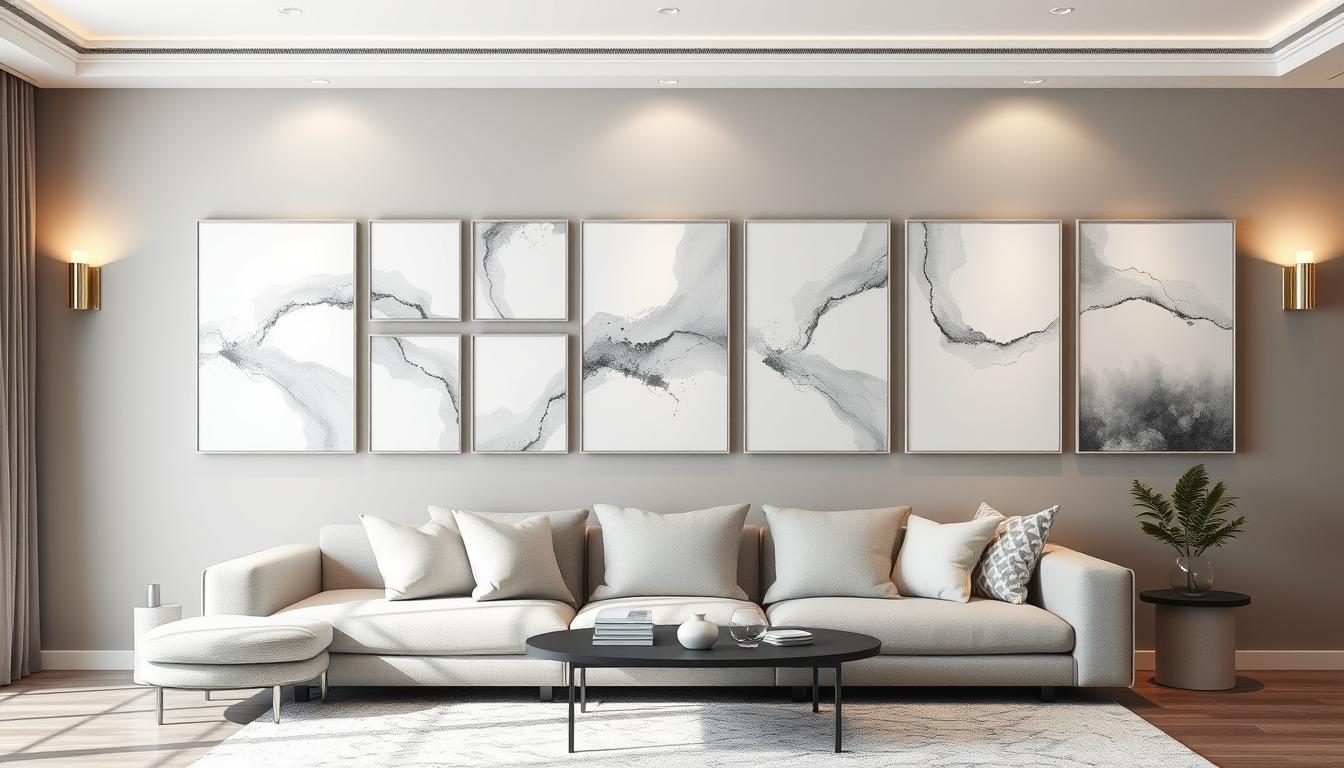Did you know gothic architecture and decor are back in style? Many people are adding these dramatic touches to their homes.
We’ll dive into making gothic interior home designs. These designs are dark yet luxurious. They mix gothic flair with today’s comforts to turn any room into a gothic paradise.
By mixing deep, bold looks with elegant decor, we can make our homes stand out. They show off the beauty of gothic home decor.
Key Takeaways
- Understanding the core elements of gothic interior design
- Balancing dark aesthetics with luxurious elements
- Incorporating modern comforts into gothic-inspired spaces
- Creating a unique atmosphere with gothic home decor
- Transforming your home into a gothic haven
Understanding Gothic Design Elements
To create a space that feels Gothic, you need to know its key parts. Gothic design is known for its dramatic and mysterious look. This look comes from certain architectural and decorative features.
Key Features of Gothic Interior Style
Gothic interiors stand out with pointed arches, vaulted ceilings, and intricate stone carvings. These add beauty and make spaces feel grand and dramatic. To truly capture the Gothic feel, include these elements in your design.
Arches are a key part of Gothic architecture. They make spaces feel taller and more impressive. You can use archways, doorframes, or decorative shapes to bring this look into your home. Vaulted ceilings also help make spaces feel bigger and more open.
Common Color Palettes for Gothic Spaces
Gothic spaces often use a deep, dark color scheme. You’ll see deep reds, blacks, and rich purples a lot. These colors create a dramatic and mysterious vibe, great for making a bold statement.
To not make the space too dark, add metallic touches like gold or silver. These add luxury and keep the space from feeling too heavy. By mixing your colors right, you can make a Gothic space that’s both striking and welcoming.
Selecting the Right Gothic Furniture
To get the true gothic look, picking the right furniture is key. Gothic furniture stands out with its detailed designs, rich materials, and deep history.
Iconic Pieces for a Gothic Aesthetic
Some furniture is essential for a gothic look. Look for ornate wooden furniture with detailed carvings. These often show gothic symbols like gargoyles and fleur-de-lis.
Adding statues and figurines with gothic themes also enhances the feel. Heavy, luxurious fabrics like velvet or tapestry in deep colors add to the style. Colors like burgundy, purple, or black are perfect.
Where to Find Authentic Gothic Furniture
Finding real gothic furniture can be tough. But, there are ways to find it. Antique shops and vintage stores have pieces that fit the gothic style. They might cost more, though.
For a budget-friendly option, consider custom pieces or online shopping. Online stores focused on gothic decor offer a variety. You can find everything from affordable pieces to high-end, handmade furniture.
Combining antique and modern furniture works well. It brings together old and new, adding character to your space. This way, you can make your gothic style truly yours.
Incorporating Gothic Textiles and Fabrics
To make a gothic space feel real, using the right textiles is key. The right fabrics can change a room, adding depth, luxury, and mystery.
Choosing Rich Fabrics for a Luxurious Feel
Gothic interiors love rich, luxurious fabrics. Velvet is a must, with its soft, plush feel, adding opulence. Lace and detailed embroidery add elegance and mystery.
Heavy tapestries and patterned fabrics bring drama and grandeur. Use them in curtains, upholstery, and wall hangings for a unified gothic feel.
Patterns and Textures that Enhance Gothic Design
Patterns and textures in gothic textiles are vital. Intricate damask patterns and floral motifs add visual interest and depth.
Using different textures, like silk’s smoothness and velvet’s luxury, adds complexity. Mixing textures and patterns creates a rich, gothic look.
In dark homes, these textiles make the space warm and cozy. By choosing the right gothic fabrics, you can make a space that’s both mysterious and welcoming.
Utilizing Lighting to Enhance Gothic Ambiance
Lighting is key in gothic interior design. It can turn a space into a mysterious and welcoming place. The right lighting highlights a gothic home’s dramatic features, making it both elegant and haunting.
Candles and Chandeliers: Setting the Mood
Candles and chandeliers are essential in gothic lighting. They give off a warm, soft light that adds to a room’s mystical feel. Candles are versatile, fitting in many places, from candelabras to simple holders.
Chandeliers, though, are the focal point. They draw the eye up and add grandeur. For a gothic look, choose chandeliers with designs like cobwebs, gargoyles, or fleur-de-lis.
Modern Lighting Options that Fit Gothic Style
Modern lighting can also fit the gothic style. For example, LED candles are a safer choice than real ones. They mimic the flicker of real flames without the danger.
Dimmable lighting systems are another modern option. They let you change the mood by adjusting the light’s brightness. This way, you can switch from a bright, welcoming feel to a dim, mysterious one.
| Lighting Type | Traditional | Modern |
|---|---|---|
| Candles | Real flames, warm glow | LED candles, safe and flameless |
| Chandeliers | Intricate designs, often with crystals or metalwork | Energy-efficient, with designs that mimic traditional styles |
| Lighting Control | Manual adjustment | Dimmable systems, remote control |
Lighting is vital in gothic interior design. It can make a room’s ambiance better. Whether you choose traditional candles and chandeliers or modern ones, aim for a mix of drama and practicality.
Bringing in Gothic Artwork and Decor
To make a gothic interior feel real, you need to add artwork and decor that fits the gothic style. Look for pieces with intricate patterns, mysterious symbols, and bold lighting. These elements can be found in many types of art and decor.
Selecting Art that Complements the Theme
When picking art for a gothic space, find pieces that show the mystery and beauty of gothic architecture. Look for paintings or prints of gothic cathedrals, landscapes with eerie skies, or detailed portraits. Artwork with symbolism like crosses, gargoyles, or flowers is also great.
Choose art that speaks to you but still keeps the gothic feel. This could be modern takes on gothic themes or classic pieces that remind you of the past.
The Role of Wall Decor in Gothic Interiors
Wall decor is key in making a room feel gothic. Use tapestries with complex designs, mirrors in fancy frames, and sculptures on walls. These can add to the dramatic look of a gothic room. Look for decor that shows off the grandness of gothic design, like big, fancy frames or metalwork that looks like gothic architecture.
When picking your gothic art and decor, aim for a mix of textures, patterns, and themes. This will make your space feel real and engaging.
Designing a Gothic-Inspired Color Scheme
Creating a gothic-inspired color scheme means understanding light and darkness. A good color scheme is key to capturing the gothic feel. It sets the mood for the whole space.
To make a gothic style interior pop, balance dark and light. This contrast adds depth and interest to a room.
Dark vs. Light Contrasts in Gothic Design
In gothic design, dark and light play a big role. Dark colors like black, dark red, and purple add mystery and luxury. Lighter shades bring elegance and sophistication.
Using Contrasts Effectively:
- Pair deep, rich colors with lighter accents to create visual interest.
- Balance dark walls with lighter furniture and decor.
- Experiment with different shades to find the perfect balance for your space.

Color Combinations to Emphasize Gothic Elements
Some color combinations highlight gothic elements in your design. For instance, deep reds with blacks create a dramatic, luxurious feel. Adding gold accents brings opulence.
| Color Combination | Description | Effect |
|---|---|---|
| Deep Reds and Blacks | Dramatic and luxurious | Creates a sense of mystery and elegance |
| Gold Accents with Dark Colors | Adds a touch of luxury | Introduces opulence and sophistication |
| Purples and Dark Greens | Rich and mysterious | Enhances the gothic ambiance |
By choosing and balancing colors wisely, you can make a gothic-inspired interior. It will be both dramatic and harmonious, ideal for dark home interiors.
Creating Depth with Architectural Features
Architectural details are key in defining the gothic style in interior design. Elements like archways, vaulted ceilings, and unique flooring add depth. They create a space that feels grand, just like gothic architecture.
Archways and vaulted ceilings are central to gothic design. They add visual interest and make spaces feel taller and more grand.
Archways and Vaulted Ceilings in Gothic Spaces
Archways act as gateways between areas, framing views and guiding the eye. In gothic interiors, these archways are often grand and ornate. They feature pointed arches, a classic gothic style element.
“The pointed arch is perhaps the most distinctive feature of gothic architecture, allowing for greater height and more elaborate decoration.”
Vaulted ceilings add drama and make spaces feel more open. They elevate the ceiling, creating a sense of airiness and openness. This makes rooms feel larger and more majestic.
The Impact of Flooring on Gothic Interiors
Flooring greatly affects the look of a gothic-inspired interior. Dark hardwoods, stone, and ornate tile work are popular. They help create a medieval feel.
| Flooring Type | Description | Aesthetic Impact |
|---|---|---|
| Dark Hardwoods | Rich, dense woods like oak or walnut | Adds warmth and depth |
| Stone Flooring | Natural stone like slate or limestone | Creates a sense of solidity and permanence |
| Ornate Tile Work | Intricately designed tiles | Introduces visual complexity and beauty |
By carefully choosing architectural features, you can create a gothic-inspired space. Whether you’re renovating or designing from scratch, these elements are crucial. They help achieve a rich, immersive gothic ambiance.
Adding Nature to Gothic Design
To add depth to your gothic-inspired space, consider integrating natural elements. These elements complement the dark, mysterious atmosphere. This blend of nature and gothic design creates a captivating and complex interior.

Dark-Leaved Plants and Exotic Flowers
Choosing the right plants is crucial for maintaining a gothic aesthetic. Opt for dark-leaved plants or exotic flowers. They add to the mystery and allure of your space. Some excellent choices include:
- Dark foliage plants like black calla lilies or dark-leaved alocasia.
- Exotic flowers such as bat orchids or Dracaena species.
- Plants with intricate patterns or unusual textures.
Incorporating Natural Elements
In addition to plants, other natural elements can enhance your gothic home decor. Consider incorporating:
- Natural stones or pebbles to add texture to your decor.
- Branches or driftwood to create unique decorative pieces.
- Water features that introduce a soothing, yet mysterious element.
By thoughtfully incorporating these elements, you can achieve a harmonious balance. This balance between the natural and the gothic enriches your gothic furniture and overall decor.
Personalizing Your Gothic Space
Creating a gothic interior home that shows your personality is all about mixing your style with gothic themes. You can add personal items like family heirlooms or art collections to your space. This makes your home truly unique and special.
Merging Personal Touches with Gothic Aesthetic
When blending personal touches with the gothic look, think about keeping your design cohesive. You can add gothic design elements, like intricate patterns or dark colors, to your personal items. For example, you can show off your art in ornate gothic frames or use gothic-inspired vases for elegance.
Maintaining Cohesion in Your Design
To keep your gothic interior home looking good, balance different elements. Make sure your personal items fit well with the gothic design, not overpower it. This way, you create a space that honors the gothic style while showing off your personality.



